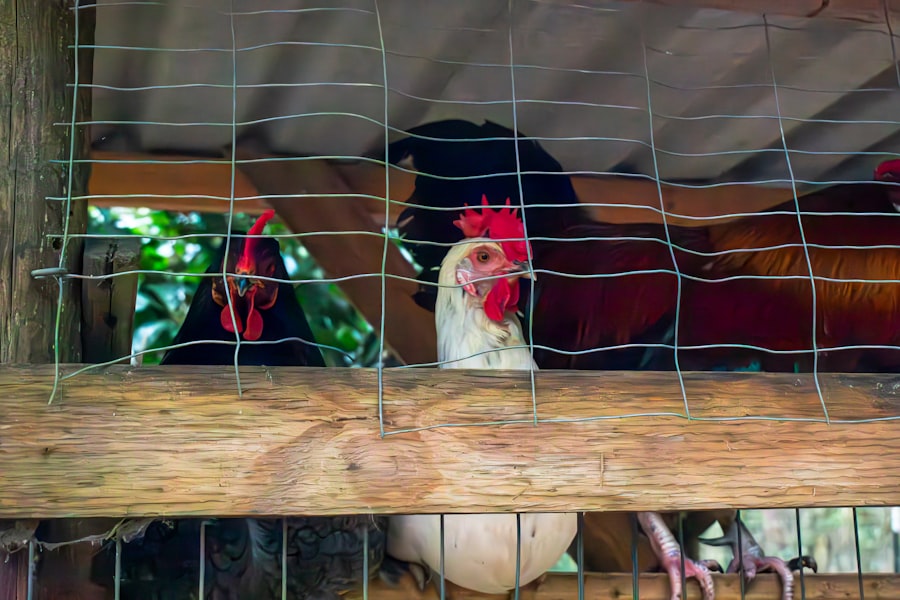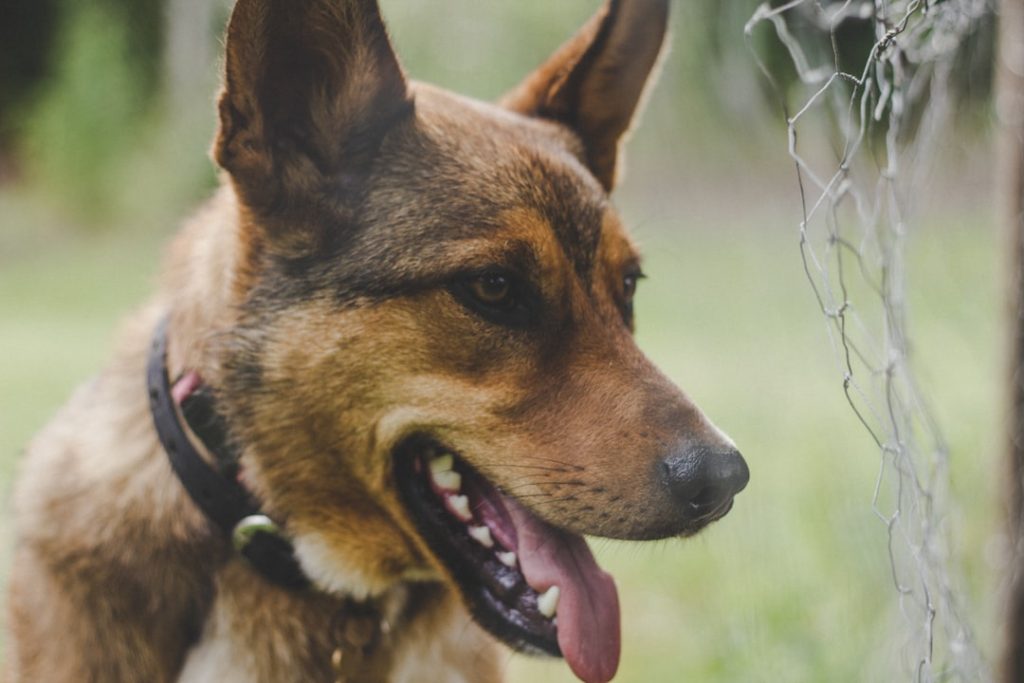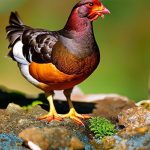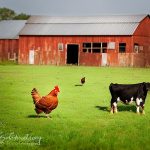Proper fencing is essential for chicken safety and containment. Chickens face threats from various predators, including foxes, raccoons, and birds of prey. A sturdy, reliable fence protects the flock from attacks and theft, preventing injury or loss.
Additionally, effective fencing prevents chickens from wandering into gardens, neighboring properties, or dangerous areas such as roads, reducing the risk of accidents and disturbances. A well-constructed fence serves multiple purposes beyond protection from external threats. It establishes clear boundaries for the chickens, providing them with a sense of security and reducing stress.
This controlled environment promotes better health and well-being for the flock. Fencing also allows chicken owners to manage their birds more effectively, ensuring they remain in designated areas and minimizing potential conflicts with neighbors or local regulations. Investing in high-quality fencing is a crucial aspect of responsible chicken keeping.
It not only safeguards the birds but also contributes to their overall quality of life. Proper fencing helps maintain a harmonious balance between the needs of the chickens and the surrounding environment, making it an indispensable element of successful poultry management.
Table of Contents
- 1 Factors to Consider When Choosing the Height of Your Chicken Fence
- 2 Recommended Height for Chicken Fencing
- 3 Common Challenges and Solutions for Keeping Chickens Within the Fence
- 4 Alternative Options for Containing Chickens
- 5 Tips for Maintaining and Repairing Chicken Fencing
- 6 Ensuring the Safety and Security of Your Flock
- 7 FAQs
- 7.1 What height should a fence be to keep chickens in?
- 7.2 Why is it important to have a high fence for chickens?
- 7.3 What type of fencing is best for keeping chickens in?
- 7.4 Are there any other measures to consider in addition to a high fence for keeping chickens in?
- 7.5 Can certain breeds of chickens fly over a 6-foot fence?
Key Takeaways
- Proper fencing is crucial for keeping chickens safe from predators and preventing them from wandering off.
- Factors to consider when choosing the height of your chicken fence include the size and breed of your chickens, the presence of predators, and the layout of your property.
- The recommended height for chicken fencing is at least 6 feet to prevent chickens from flying over and to deter predators from climbing over.
- Common challenges for keeping chickens within the fence include digging under the fence, flying over the fence, and predators breaking through the fence. Solutions include burying the fence, clipping wings, and reinforcing the fence with predator-proof materials.
- Alternative options for containing chickens include electric fencing, chicken wire, and chicken tractors.
- Tips for maintaining and repairing chicken fencing include regular inspections, fixing any damages promptly, and keeping vegetation trimmed around the fence.
- In conclusion, ensuring the safety and security of your flock requires proper fencing, consideration of height, addressing common challenges, exploring alternative options, and regular maintenance and repairs.
Factors to Consider When Choosing the Height of Your Chicken Fence
Size and Breed of Chickens
The size and breed of your chickens play a significant role in determining the height of your fence. Larger breeds, such as Orpingtons or Brahmas, may require a taller fence to prevent them from flying over or escaping.
Predators and Rivals
The presence of predators in your area is another crucial factor to consider. If you live in an area with a high population of predators such as foxes or raccoons, you will need a taller fence to deter them from attempting to breach the enclosure. Additionally, if you have roosters in your flock, they may be more inclined to fly over a fence in pursuit of potential threats or rivals, so a taller fence may be necessary to contain them.
Overhead Protection
It’s essential to research the typical behavior and capabilities of local predators to determine the appropriate height for your chicken fence. Furthermore, if you have overhead predators such as hawks or owls in your area, you may need to consider adding netting or other overhead protection to your fence to prevent aerial attacks on your flock.
Recommended Height for Chicken Fencing

The recommended height for chicken fencing can vary depending on the specific needs and circumstances of your flock. In general, a good starting point for chicken fencing is a height of at least 6 feet. This height is typically sufficient to prevent most chicken breeds from flying over the fence and escaping, as well as deterring ground-based predators from attempting to breach the enclosure.
However, it’s important to assess the specific needs of your flock and the potential threats in your area to determine if a taller fence may be necessary. For larger or more active breeds of chickens, or for flocks that include roosters, a fence height of 7-8 feet may be more appropriate to prevent escape attempts. Additionally, if you live in an area with a high population of predators, or if you have experienced frequent predator attacks on your flock, you may want to consider a taller fence of 8-10 feet or more to provide extra protection.
It’s important to regularly assess the effectiveness of your fencing and make adjustments as needed to ensure the safety and security of your flock.
Common Challenges and Solutions for Keeping Chickens Within the Fence
Keeping chickens within the fence can present several challenges, but there are effective solutions to address these issues and ensure the security of your flock. One common challenge is chickens escaping by flying over the fence. To prevent this, you can trim the flight feathers on one wing of each chicken, which will disrupt their ability to achieve lift and fly over the fence.
Another solution is to provide adequate space and enrichment within the enclosure to reduce the likelihood of chickens attempting to escape. Another challenge is predators attempting to breach the fence to access the flock. To address this, it’s important to regularly inspect the fence for any signs of damage or weakness and make repairs as needed.
Additionally, adding an apron or skirt around the perimeter of the fence can help deter predators from digging under the enclosure. Using electric fencing or adding predator-proof netting over the top of the enclosure can also provide additional protection against aerial attacks.
Alternative Options for Containing Chickens
In addition to traditional fencing, there are alternative options for containing chickens that may be suitable for specific circumstances or preferences. One option is using chicken tractors or mobile coops, which are portable enclosures that can be moved around the yard to provide fresh grazing areas for the flock while keeping them contained. This option is particularly useful for small-scale or urban chicken keepers who may not have space for a permanent fenced enclosure.
Another alternative option is using electric fencing, which can provide effective containment and predator deterrence for chickens. Electric fencing delivers a mild shock to any animal that comes into contact with it, effectively deterring predators and preventing chickens from attempting to escape. Electric fencing can be particularly useful for protecting free-range chickens or for providing temporary containment in areas where traditional fencing may not be practical.
Tips for Maintaining and Repairing Chicken Fencing

Fence Maintenance Essentials
Regularly trimming vegetation around the perimeter of the fence is vital to prevent it from providing cover for predators or creating opportunities for chickens to escape. This simple task can make a significant difference in maintaining a secure and safe environment for your chickens.
Electric Fencing Maintenance
Regularly checking and maintaining electric fencing components is crucial for ensuring its effectiveness in deterring predators and containing chickens. This includes testing the electric charge regularly and replacing any damaged wires or insulators as needed.
Clearing the Area Around Electric Fencing
It’s essential to keep the area around electric fencing clear of debris and vegetation that could interfere with its function. By doing so, you can ensure that your electric fencing remains effective and continues to provide a safe and secure environment for your chickens.
Ensuring the Safety and Security of Your Flock
In conclusion, proper fencing is essential for keeping chickens safe, secure, and contained within a designated area. When choosing the height of your chicken fence, it’s important to consider factors such as the size and breed of your chickens, the presence of predators in your area, and any specific challenges you may have experienced in keeping your flock contained. The recommended height for chicken fencing can vary depending on these factors, but a good starting point is typically a height of at least 6 feet.
Common challenges in keeping chickens within the fence include escape attempts by flying over the fence and predator attacks on the enclosure. However, there are effective solutions such as trimming flight feathers, providing enrichment within the enclosure, making regular inspections and repairs to the fence, and using alternative containment options such as electric fencing or mobile coops. By following these tips and taking proactive measures to maintain and repair your chicken fencing, you can ensure the safety and security of your flock while providing them with a healthy and enriching living environment.
Proper fencing not only protects chickens from predators and potential harm but also helps establish boundaries and provide a sense of security for a happier and healthier flock overall.
If you’re considering building a fence to keep your chickens safe, you may also want to think about the size of the coop door. A properly sized door can help prevent predators from entering the coop and harming your chickens. For more information on how to choose the right size door for your chicken coop, check out this article on chicken coop door size.
FAQs
What height should a fence be to keep chickens in?
The recommended height for a fence to keep chickens in is at least 6 feet tall. This will prevent most breeds of chickens from flying over the fence.
Why is it important to have a high fence for chickens?
Having a high fence for chickens is important to prevent them from escaping and to protect them from predators. Chickens are capable of flying short distances and can easily jump or fly over low fences.
What type of fencing is best for keeping chickens in?
For keeping chickens in, it is best to use a sturdy and secure fencing material such as hardware cloth or welded wire. These types of fencing provide better protection against predators and are more durable than other options.
Are there any other measures to consider in addition to a high fence for keeping chickens in?
In addition to a high fence, it is important to also consider reinforcing the bottom of the fence to prevent predators from digging underneath. Adding a roof or netting over the chicken enclosure can also provide extra protection against aerial predators.
Can certain breeds of chickens fly over a 6-foot fence?
While most standard breeds of chickens are not capable of flying over a 6-foot fence, some lighter and more agile breeds may still be able to do so. It is important to consider the specific breed of chickens when determining the appropriate fence height.
Meet Walter, the feathered-friend fanatic of Florida! Nestled in the sunshine state, Walter struts through life with his feathered companions, clucking his way to happiness. With a coop that’s fancier than a five-star hotel, he’s the Don Juan of the chicken world. When he’s not teaching his hens to do the cha-cha, you’ll find him in a heated debate with his prized rooster, Sir Clucks-a-Lot. Walter’s poultry passion is no yolk; he’s the sunny-side-up guy you never knew you needed in your flock of friends!







